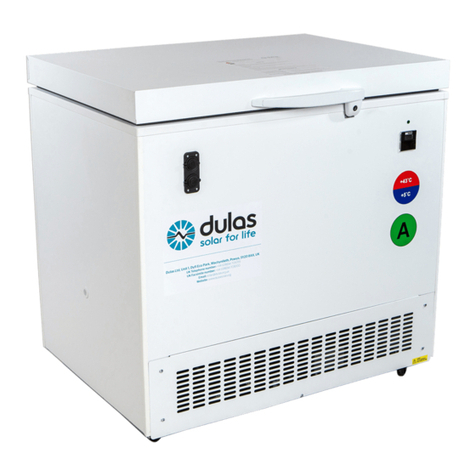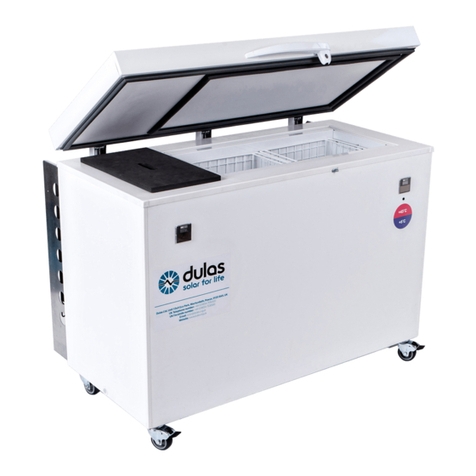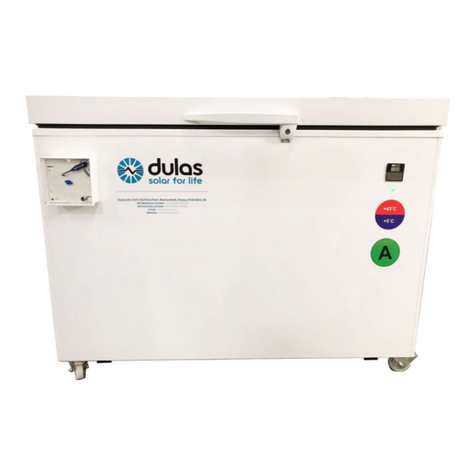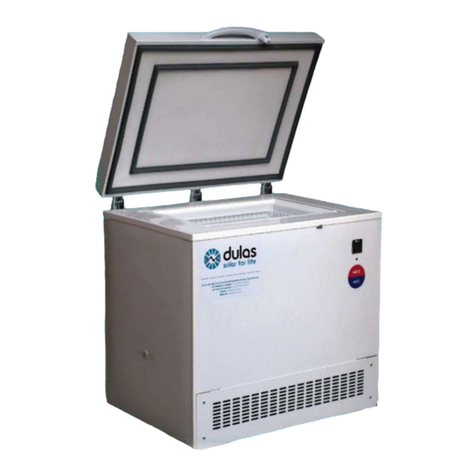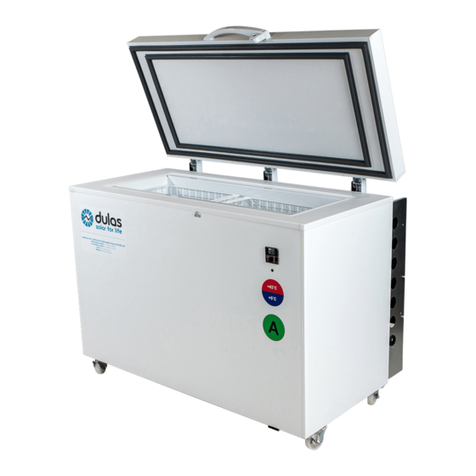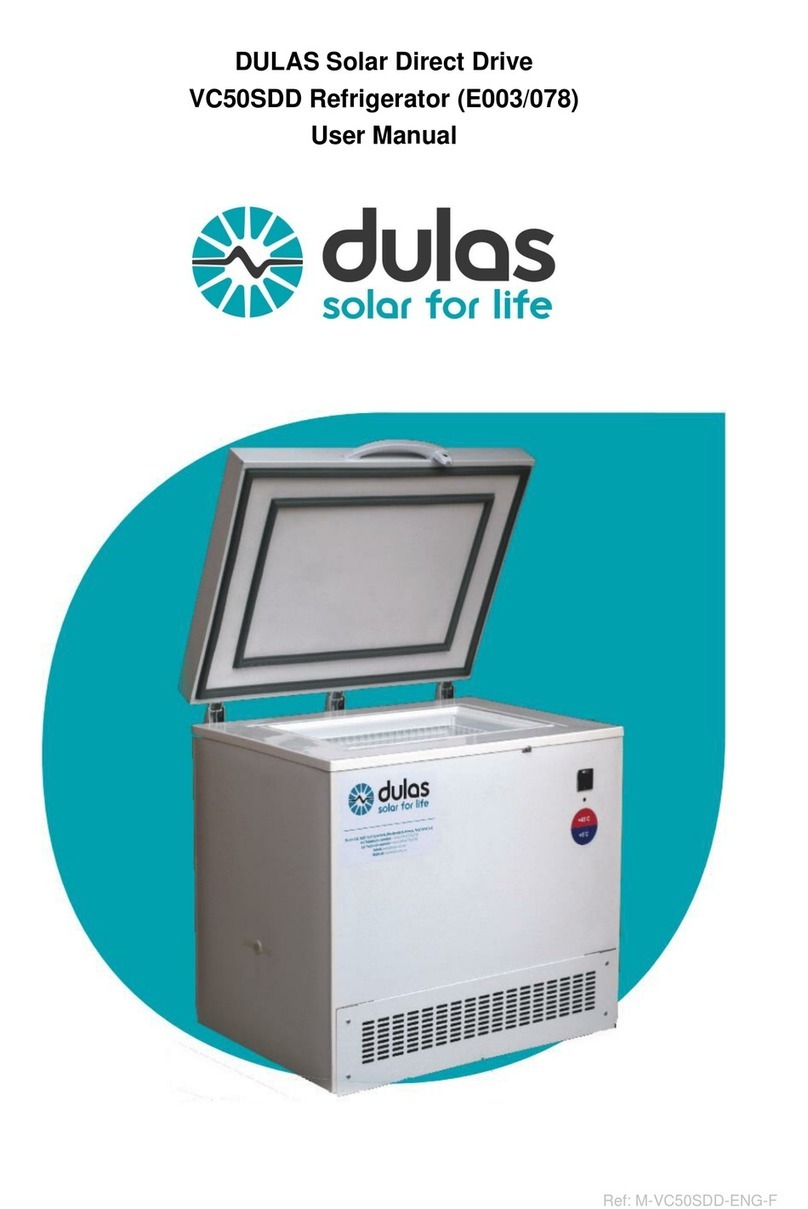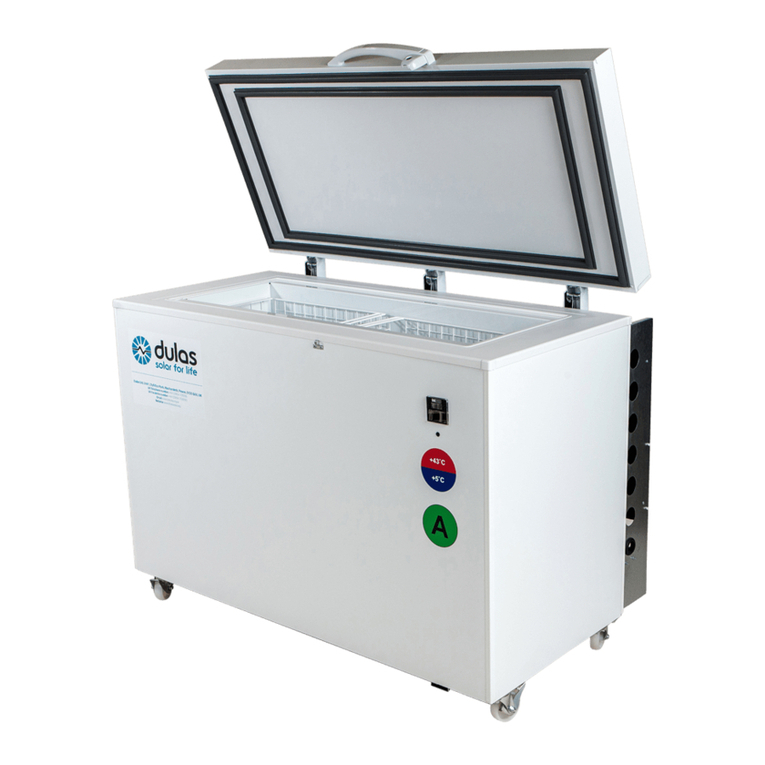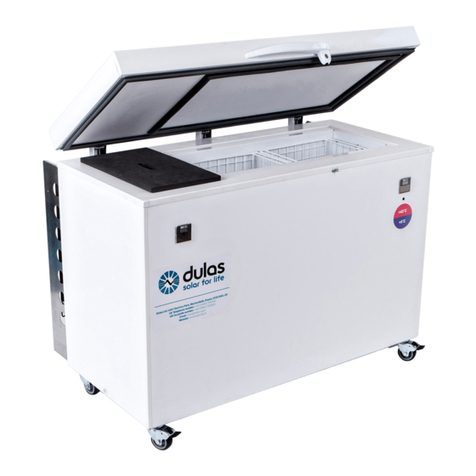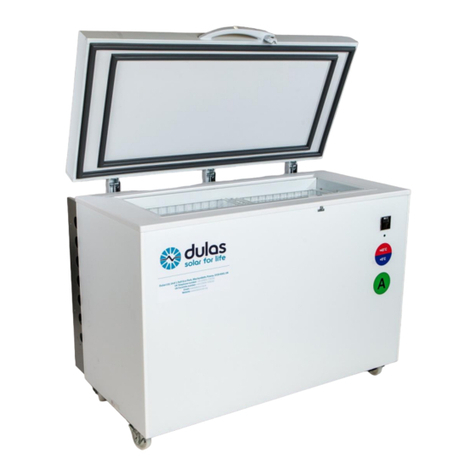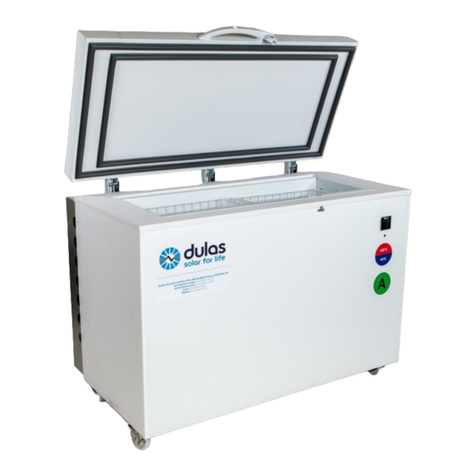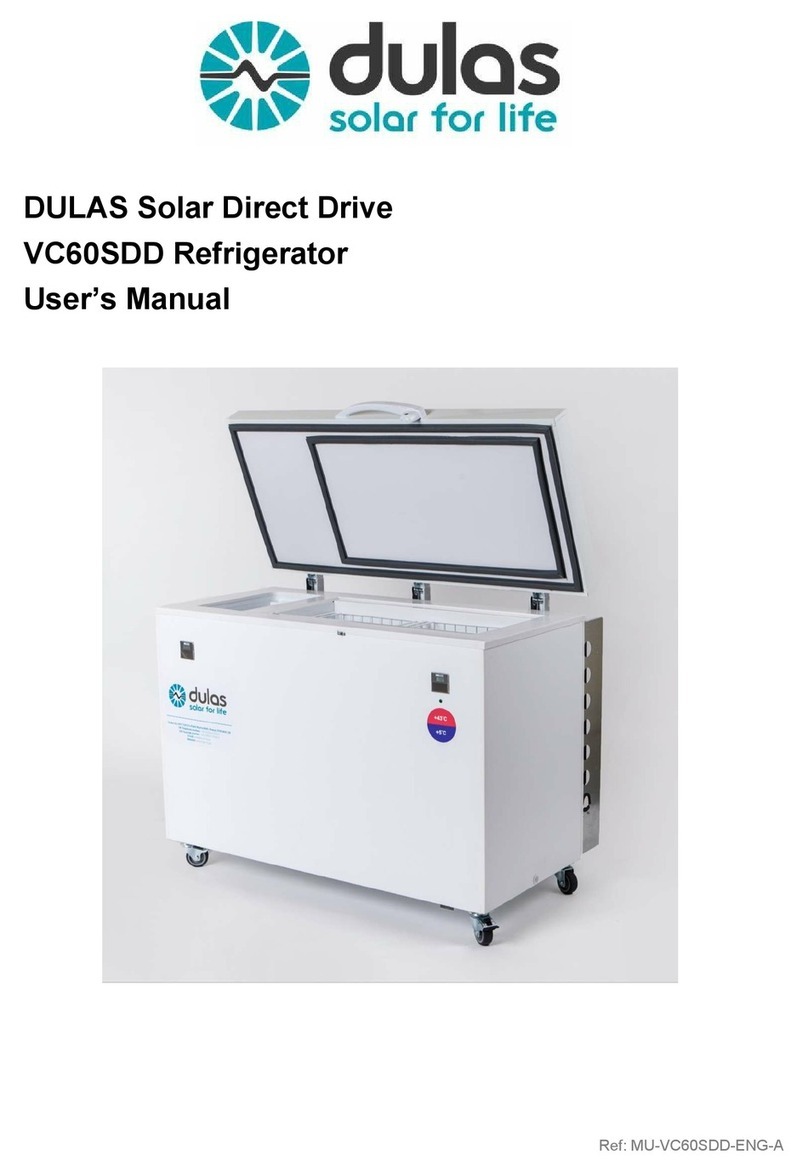Table of Contents
1. COMPONENTS CHECKLIST...................................................................................... 3
2. SAFETY INSTRUCTIONS........................................................................................... 4
3. YOUR DULAS SOLAR DIRECT DRIVE REFRIGERATOR......................................... 6
4. REFRIGERATOR COMPONENTS.............................................................................. 7
5. RECOMMENDED TECHNICIAN’S TOOLS ................................................................. 8
6. MATERIAL SAFETY INFORMATION.......................................................................... 9
7. END OF LIFE & PRODUCT RECYCLING..................................................................10
8. REFRIGERATOR TRANSPORTATION......................................................................12
9. PREPARING TO INSTALL .........................................................................................13
10. SOLAR ARRAY ASSEMBLY...................................................................................14
11. SOLAR ARRAY ORIENTATION..............................................................................20
12. SOLAR ARRAY INSTALLATION.............................................................................21
13. SOLAR MODULE CONNECTIONS.........................................................................23
14. COMMISSIONING SOLAR ARRAY ........................................................................24
15. ADVICE ON LIGHTNING PROTECTION................................................................25
16. ADVICE ON SURGE PROTECTION.......................................................................25
17. SOLAR ARRAY EARTHING....................................................................................26
18. REFRIGERATOR INSTALLATION..........................................................................27
19. SYSTEM COMMISSIONING...................................................................................28
20. REFRIGERATOR LOADING...................................................................................29
21. GREEN COMPRESSOR STATUS LED LIGHT.......................................................30
22. USER TRAINING.....................................................................................................31
23. MAINTENANCE TASKS..........................................................................................31
24. TROUBLESHOOTING GUIDE ................................................................................32
25. INSTALLATION & COMMISSIONING RECORD.....................................................39
26. VC88SDD ELECTRICAL SCHEMATIC...................................................................42
27. VC88SDD REFRIGERATION SCHEMATIC............................................................43
28. SPARE PARTS........................................................................................................43
29. VC88SDD SYSTEM LAYOUT.................................................................................44
